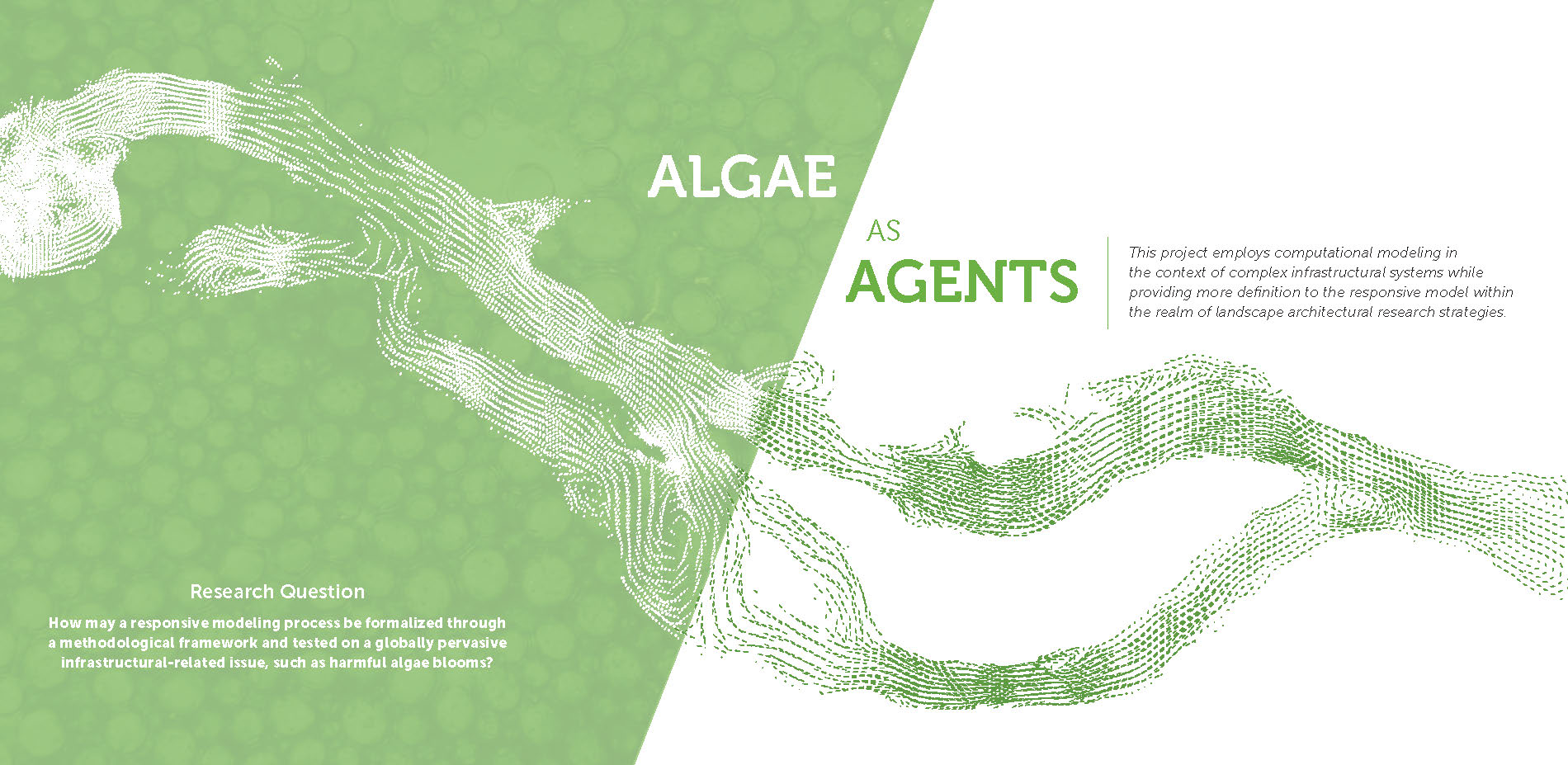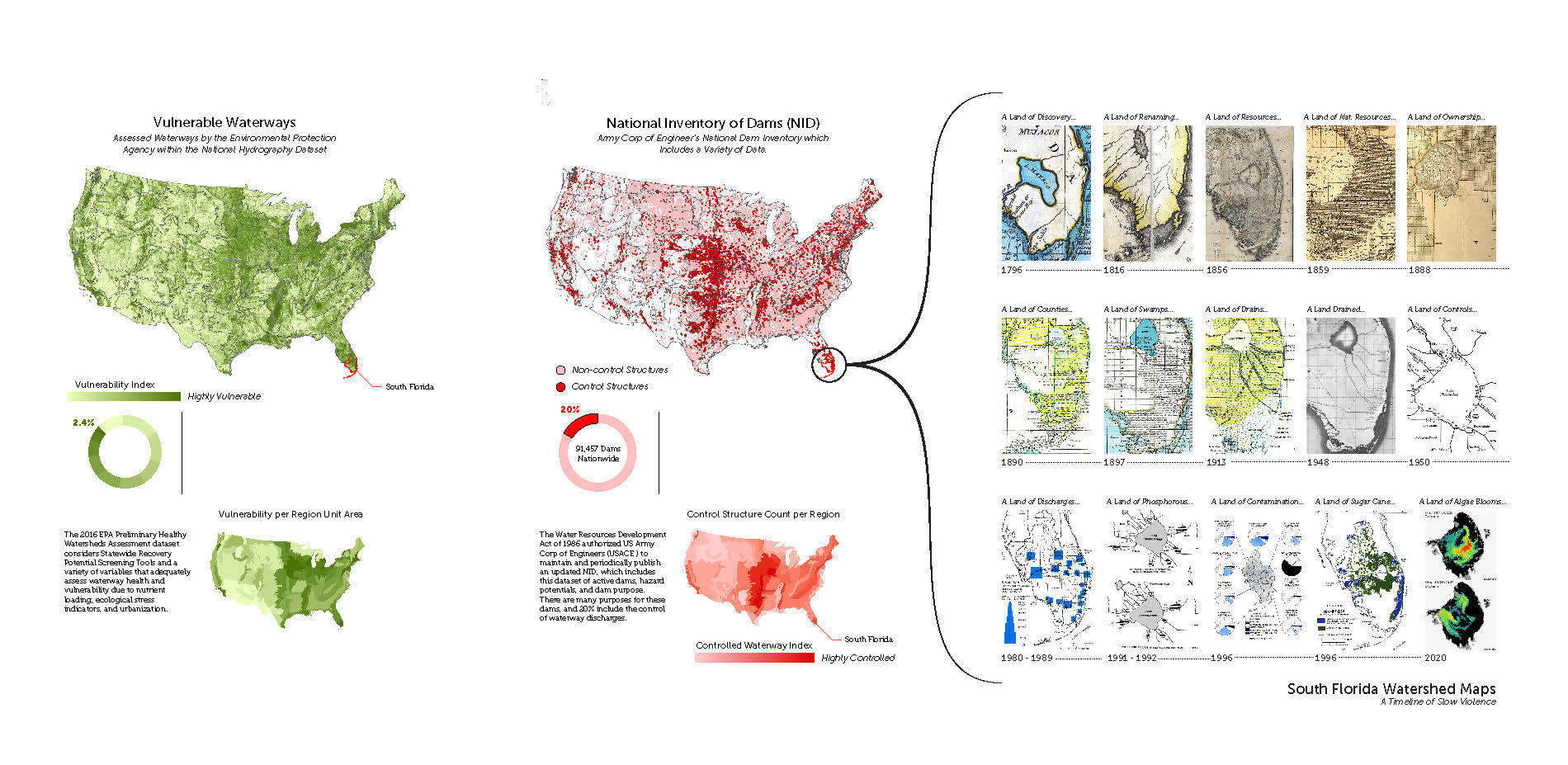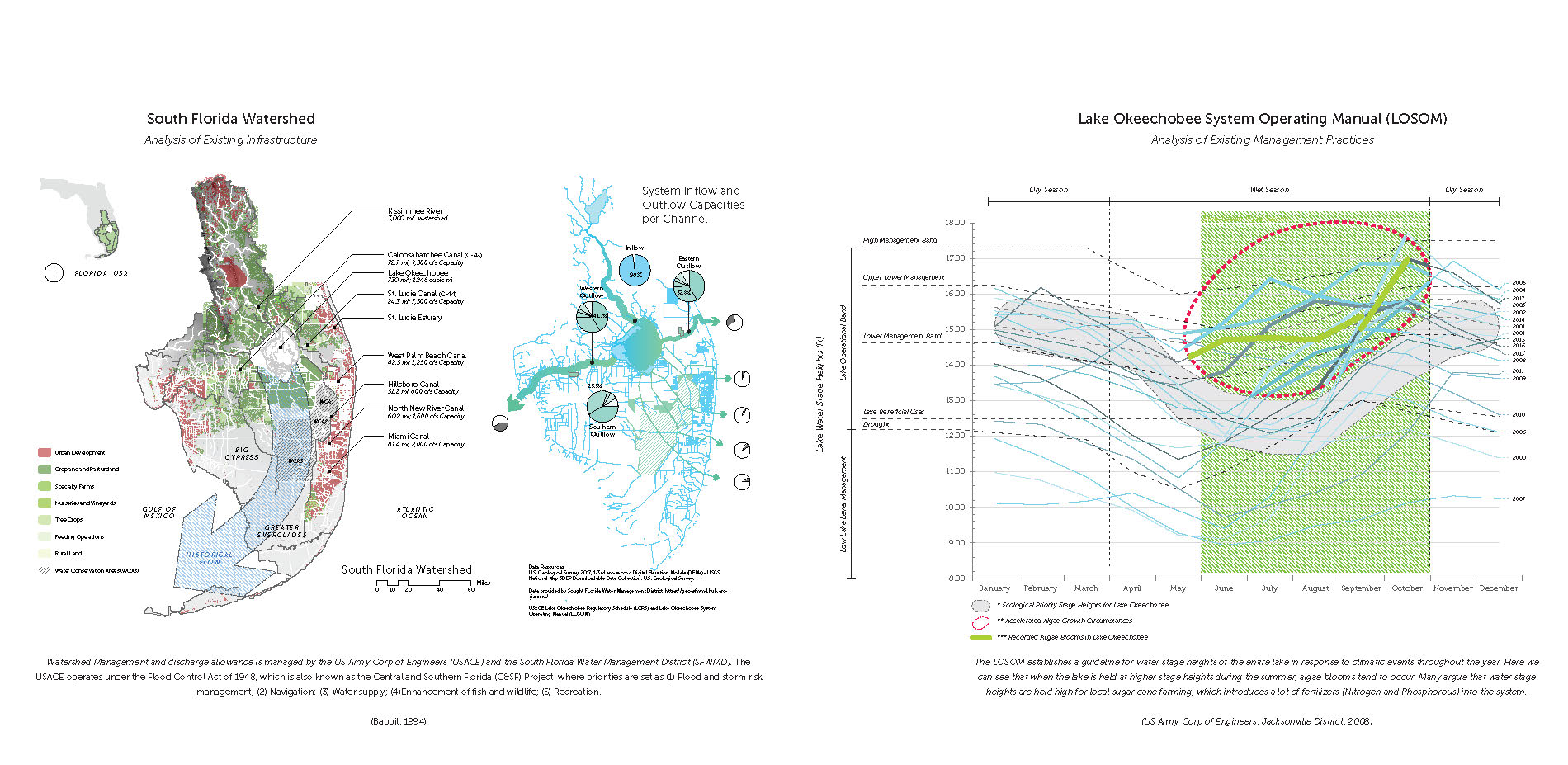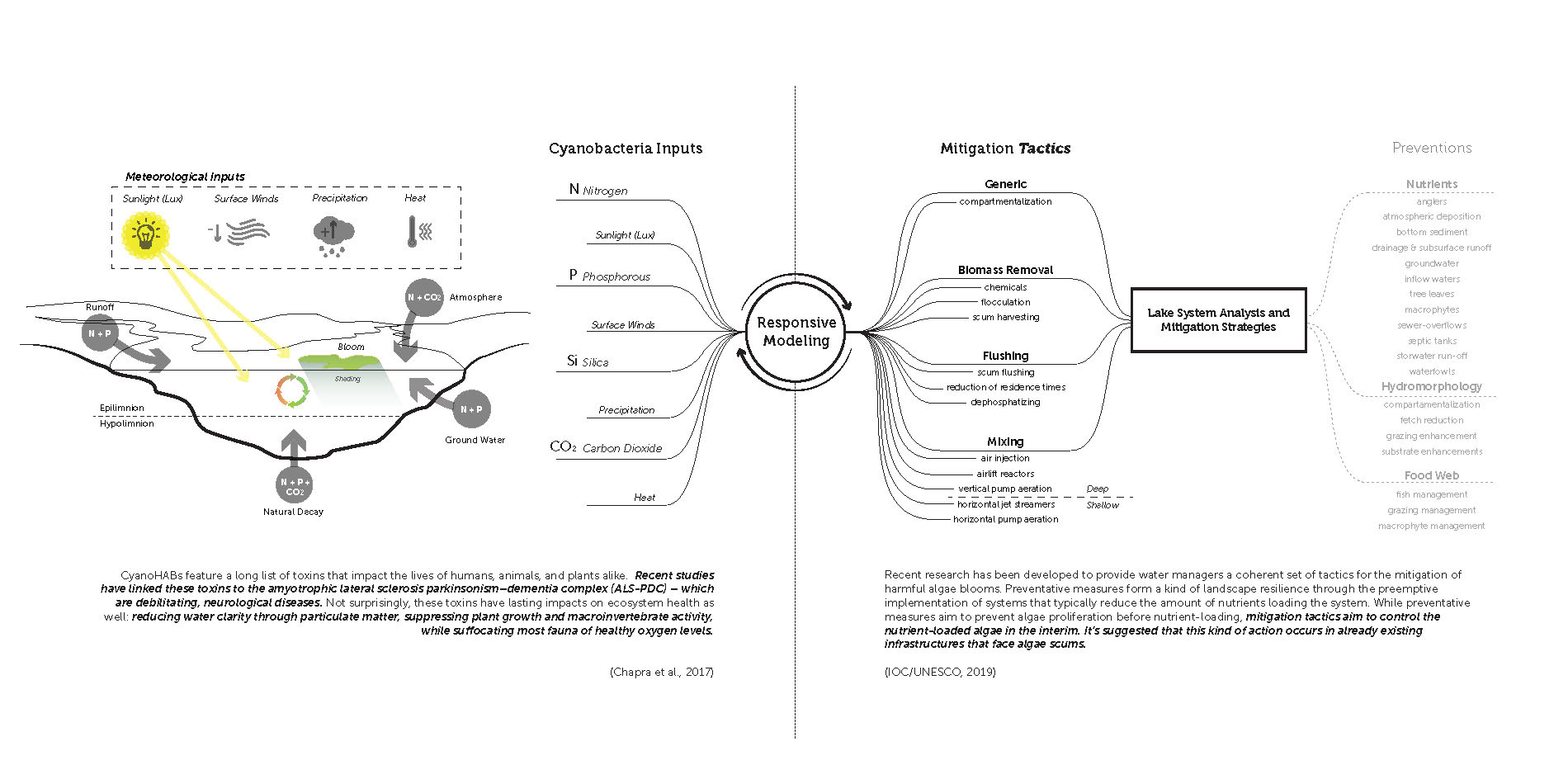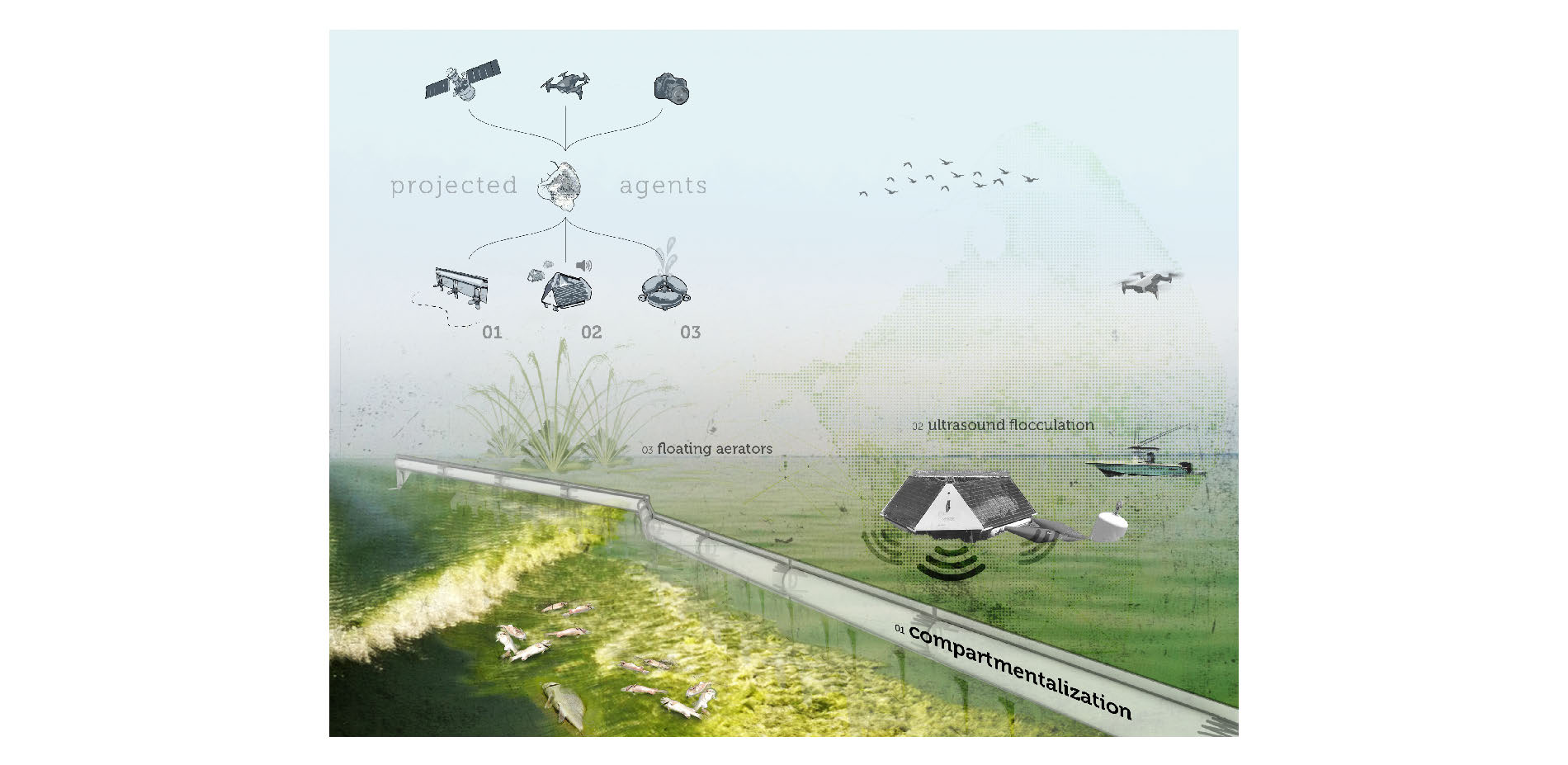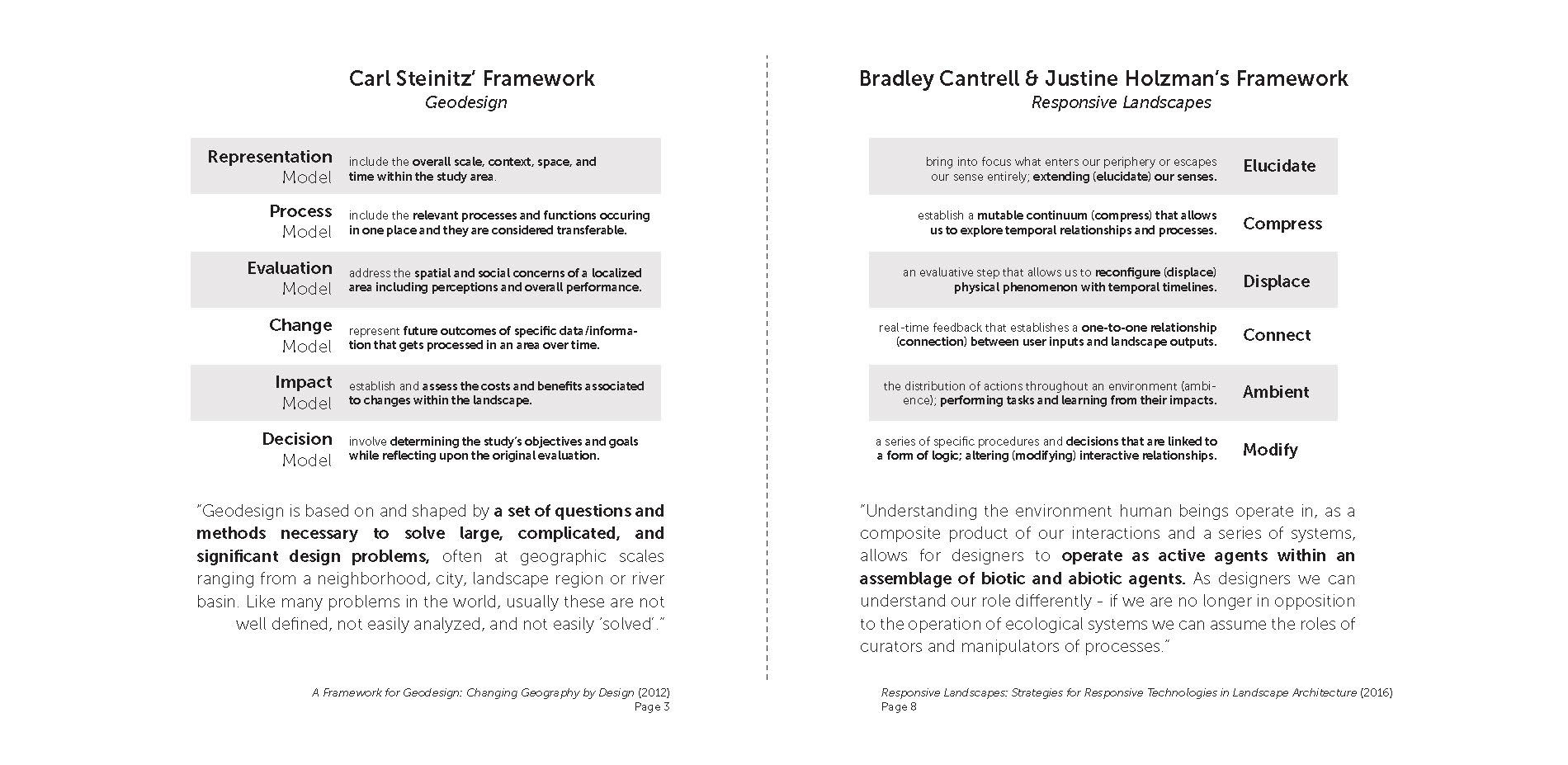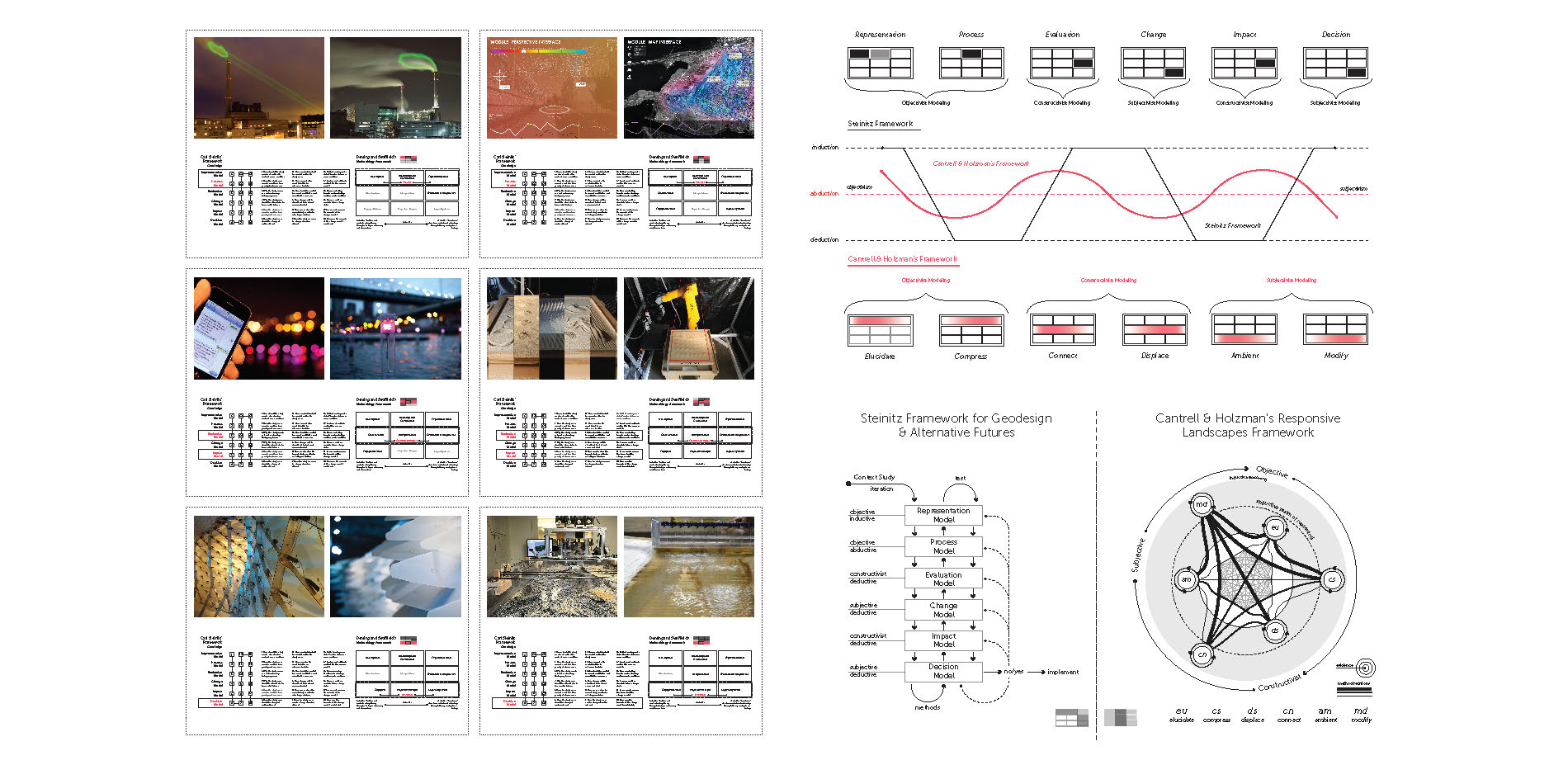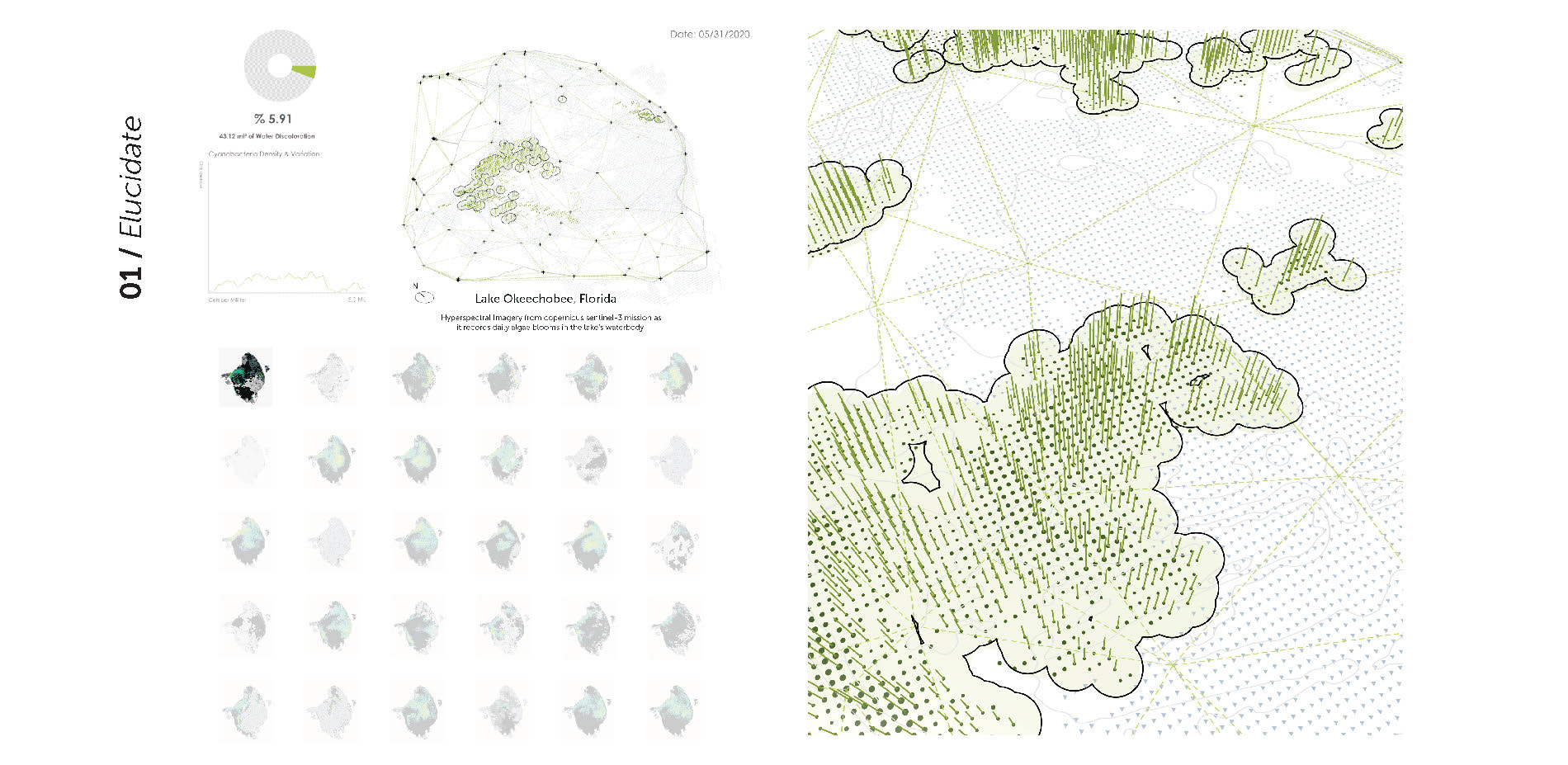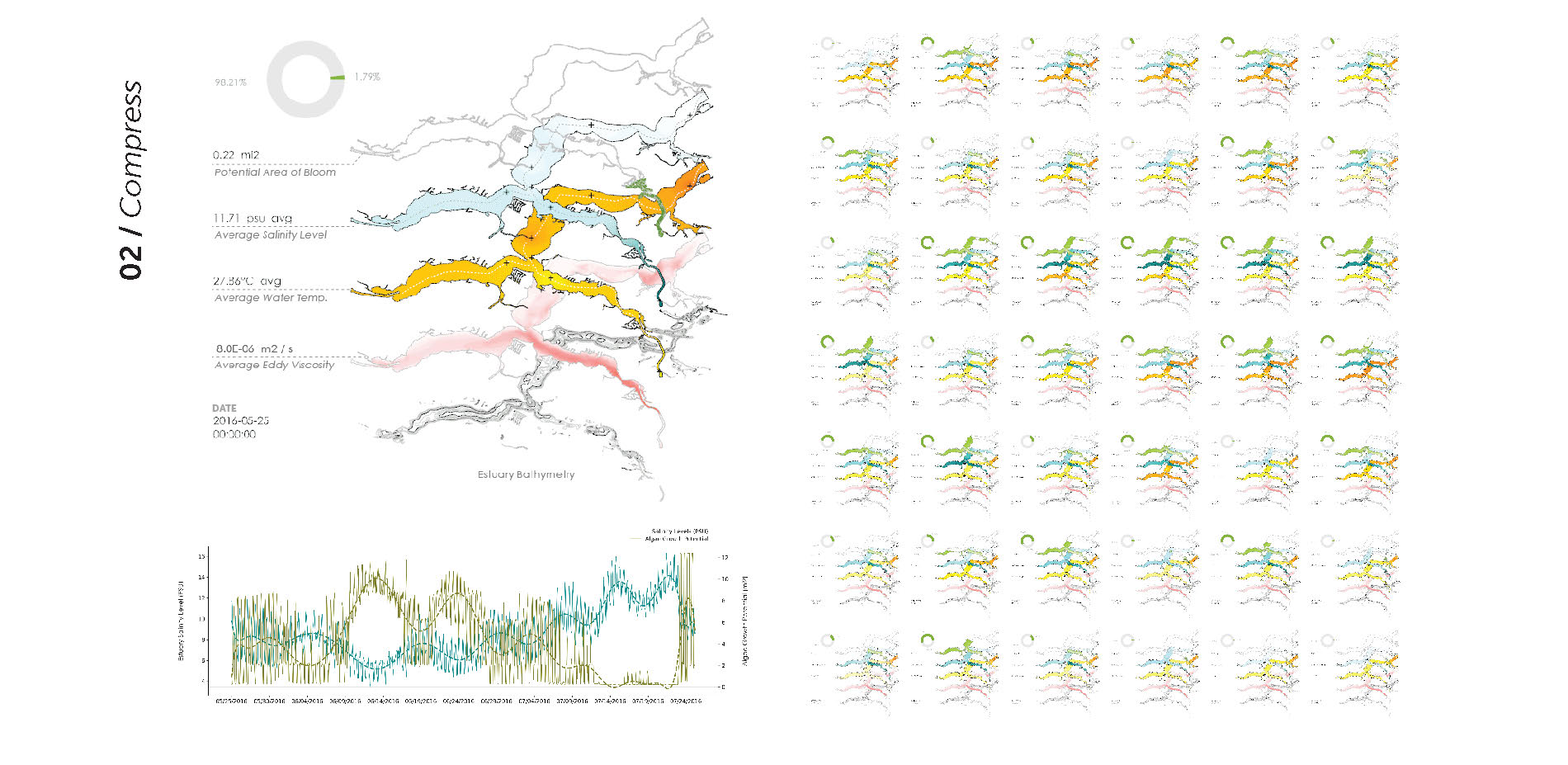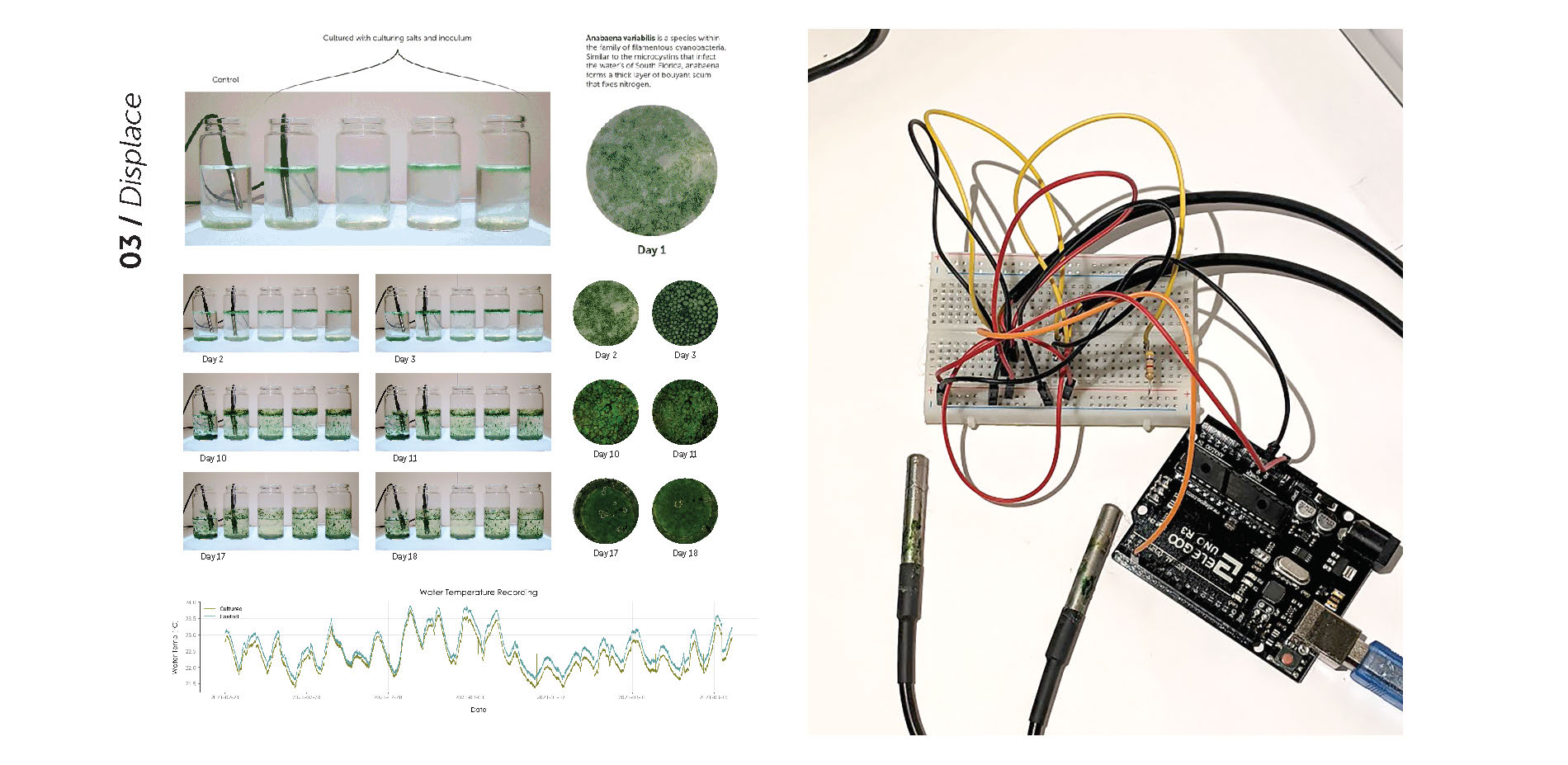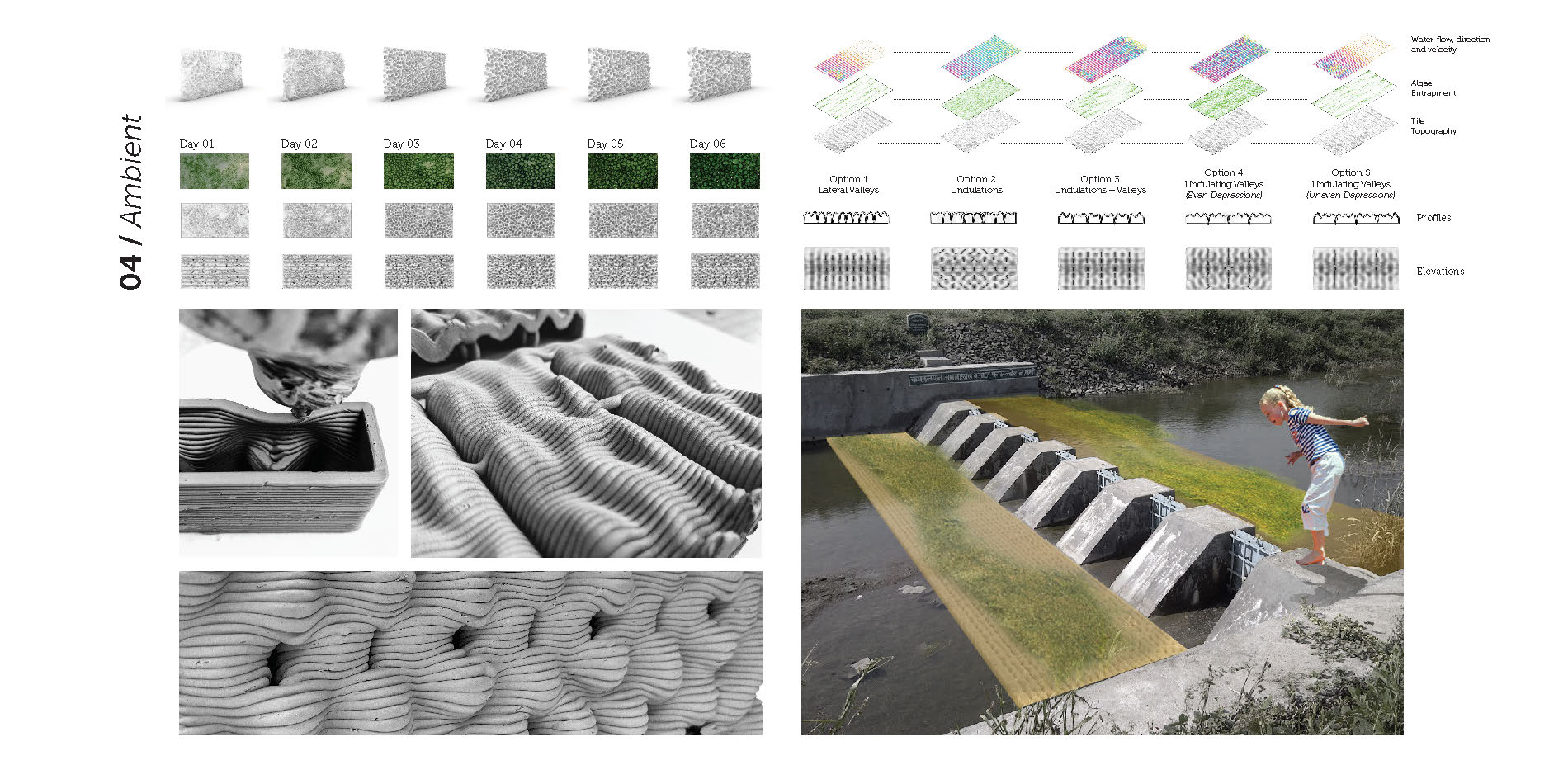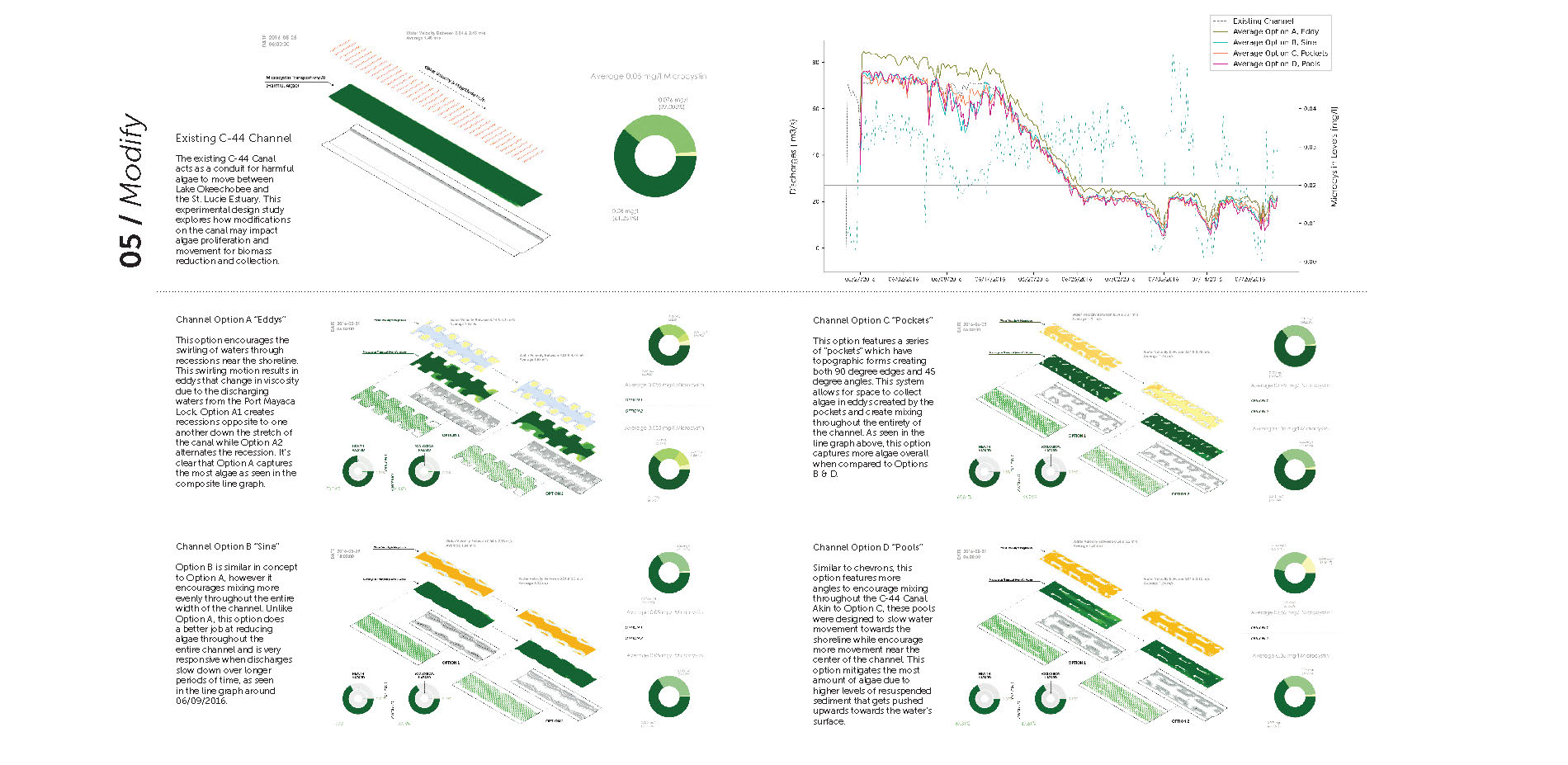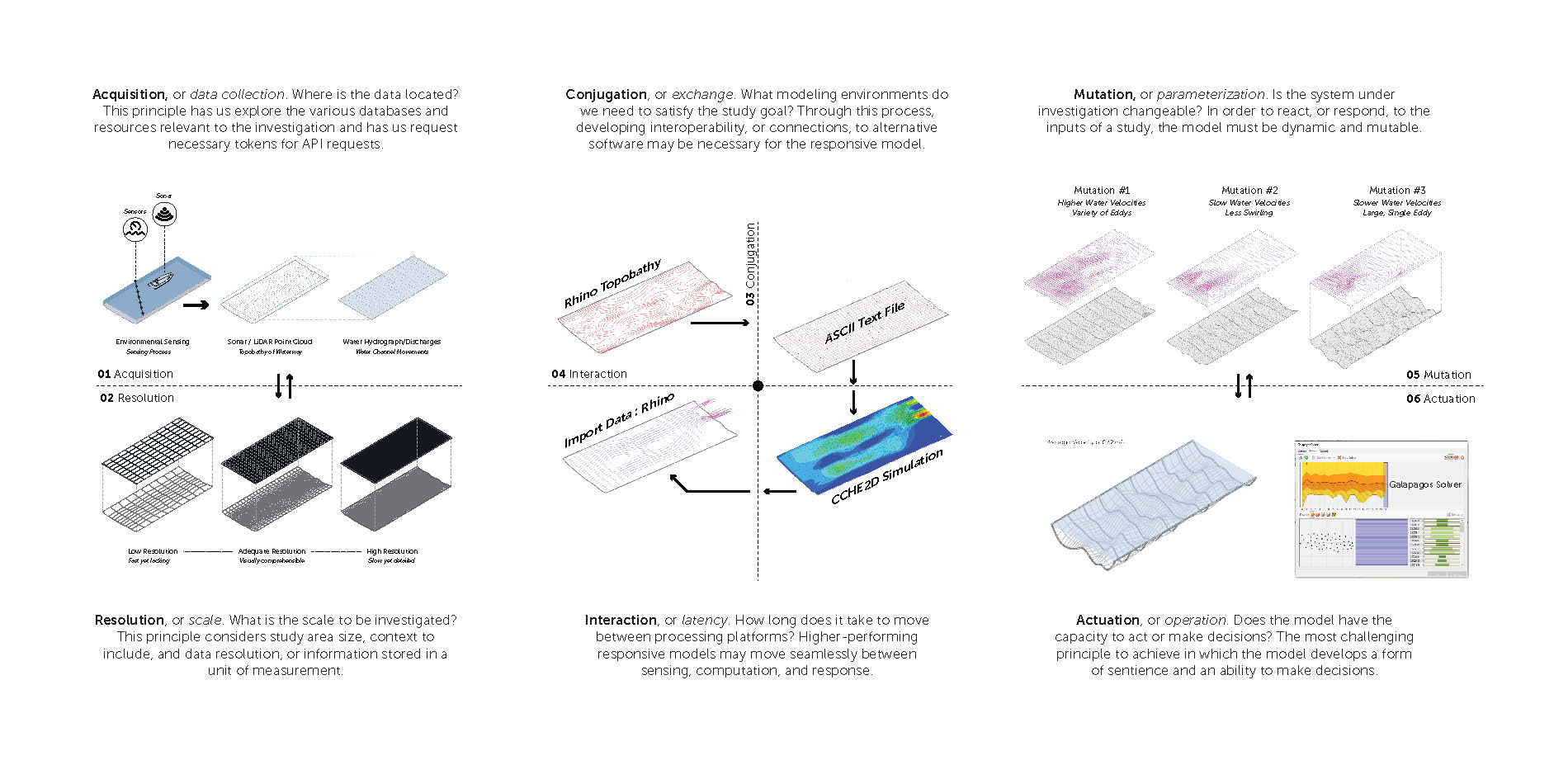Algae as Agents
Honor Award
Research
South Florida, United States
Aaron Woolverton, Student ASLA
Faculty Advisors: Michael Geffel, ASLA; Jun Hak Lee
University of Oregon
The field often has a hard time accepting that design and landscape architecture can also be a field of research, and this type of research/design project produces something meaningful and valuable. Examining algal blooms in South Florida, this project is super-dense but also interesting. They approached algae monitoring using modeling, and we were impressed with the variety of models they used, particularly clay printing. There’s a wonderful balance of technology and design that makes it stand out.
- 2021 Awards Jury
Project Credits
Jun Hak Lee
Project Adviser
Project Statement
Healthy waterways and integrated water management systems are essential for a resilient future. Unfortunately, with a growing worldwide population, our waterways have seen rapid urbanization and subsequent anthropogenic impacts, including ecosystem degradation, over-extraction, and nutrient loading from various land uses. In places like the Everglades, where historical ecosystems and hydrological processes have become severed, we see how land use, habitat fragmentation, development, and coastal modification result in ecological devastation. As a means of understanding this landscape phenomenon, responsive modeling establishes a place to concurrently hinge between generating and testing hypotheses while incorporating the expanding agency of computational modeling and live data streams. Inspired by the ideas of process discourse, this project investigates the harmful recurrence of algae blooms in South Florida waterways through responsive modeling. Algae as Agents aims to define the responsive model as a research method via case study investigation and analysis; subsequently, responsive modeling practices and concepts have the potential to be translated from these case studies into the context of South Florida via projective research-through-design methodologies.
Project Narrative
Background
There is a long history and dense library of tools, instruments, and representational approaches to realizing and grappling with the complexities of the natural systems around us. (Anderson and Ortega, 2016) Today, with increased access to computational tools, like algorithmic aided modeling and artificial intelligence, the field of landscape architecture sees increased opportunities to weave environmental modeling tools and live data streams into the design process via responsive modeling. (Cantrell et al., 2017) Algae as Agents exemplifies how landscape architects may engage more complex landscape management issues through the responsive model approach.
Project Methodology
To fully understand responsive models as a design methodology and application to the South Florida algae crisis, Algae as Agents utilizes and adapts a research-through-design strategy prepared by Nijhuis and Bobbink. This approach is considered a constructivist-oriented methodology that uncovers knowledge from previous responsive modeling applications and projectively applies it to the problem at hand. (Nijhuis and Bobbink, 2012) This meta-logical approach to the design problem will extend the objectives surrounding this project into two parts: (1) developing a responsive modeling framework through case study investigation & (2) developing principles in responsive modeling after projecting the processes learned from the case studies into the context of South Florida waterways.
Model Research. The selection of responsive models came through the literature review of several texts and websites that explore modern technology and its relationship to landscape design processes. The responsive modeling case studies chosen were limited to the texts reviewed; however, these texts are relatively modern and feature a wide variety of landscape modeling techniques and applications.
Comparative Analysis. After reviewing literature about responsive models, specific models were selected based on their suitability to translate into the given issues and context surrounding algae blooms. The decisions surrounding responsive model translations after a descriptive case study analysis (Deming and Swaffield, 2010), in which the purpose, approach, and implications of the model were written and deduced.
Responsive Translations. While more conventional approaches to research-by-design include translating typified landscape compositions into a new landscape context, Algae as Agents approaches research-by-design as a series of responses. Responsive modeling applications were translated into the process of analyzing and understanding algae.
Responsive Modeling. After reviewing previously researched models through interpretation, considering available data and sensing instruments, setting up a modeling environment, and connecting to other environmental software, the previous mode naturally leads us into a Responsive Model.
Meta-analysis & Reflection. The responsive model may be evaluated, assessed, and further understood through a meta-analysis via design reflection.
Project Context
South Florida is a constructed landscape in which agencies like the US Army Corp of Engineers (USACE) and the South Florida Water Management District (SFWMD) control how water moves throughout the system. With this, USACE & SFWMD have a long list of infrastructural projects intended to recover the ongoing environmental impacts of harmful algae blooms. (Army Corp of Engineers, 2020) Informed by the Comprehensive Everglades Recovery Plan, these agencies will be working for a very long time, slowly implementing large infrastructural projects that provide minimal green infrastructure and may, subsequently, cause more long-term damage to local ecologies and natural resources. (Babbit, 2005)
As for an example, Overall funding for the E&SF lands at $249 million while the USACE website “Status” section reads: “Cost estimates for the projects have increased over time due to inflation, unexpected site conditions, design modifications necessary to meet the project goals, and construction bids higher than those originally estimated.” (South Florida Ecosystem Restoration Program) According to one report, over $1.8 billion were spent by the State of Florida and $938 million spent by the federal government on restoration, totaling over 2.7 billion dollars on ecosystem restoration and water quality issues. (James Madison Institute, 2017)
Landscape Modeling Research
When considering modeling frameworks from our recent past, Carl Steinitz developed a robust approach towards Geodesign and Alternative Futures throughout his career. Although applicable to many landscape problems, Steinitz’s iterative framework towards modeling operates largely outside of the realm of abduction and experimental design. (Steinitz, 2012 and Deming & Swaffield, 2010)
Over the past decade, a growing list of responsive modeling projects has been explored and seeks to redefine our discipline and close the gaps identified in Steinitz’s framework. Like Bradley Cantrell, Justine Holzman, Karen McCloskey, Keith VanDerSys, or collaborations between the Dredge Research Collective and SCAPE, the responsive model continually redefines the practice of landscape architecture by pushing the boundaries of our discipline. (Cantrell & Holzman, 2016 and M’Closkey & VanDerSys, 2017)
Responsive modeling is a contemporary landscape design approach that embraces the dialogical nature of landscape material, process, and computation. Major components to the responsive model include sensors (sensing), computation (feedbacks), and automated decision-making (machine learning) so that the model may eventually embody a form of artificial sentience. (Cantrell & Holzman, 2016)
Principles of Responsive Modeling
The following principles are discoveries of this design process and result from a reflective meta-analysis completed after each model development:
Acquisition. If the responsive modeler has access to sensing instruments, this principle becomes relatively straightforward; the next steps include understanding what needs to be sensed and why. If the scale of the project is more regional, the model may have to tap into Statewide, or even Federal, databases and monitoring systems.
Resolution. If responsive modelers understand this principle, there’s a balance between data and space; therefore reducing the overall processing weight concerning adequately visualizing data. Many of the challenges endured throughout Algae as Agents included parsing either too much or too little data.
Conjugation. Interoperability is the process of working between programs and typically includes the transference of data outputs. This exchange of sensed or simulated data is necessary when constructing a responsive model because most design software lacks the capacity to simulate complex biophysical processes.
Interaction. While conjugation steers us towards bridging multiple platforms, interaction suggests the need for a minimal delay between platforms. The delay between sensing and informed responses shall be as minimal as possible to accomplish an interactive model.
Mutation. For the responsive model to evolve, it must have the capacity to mutate and take its own form. The advantage of utilizing the Grasshopper interface includes the ability to parametrically adjust or respond to the insights gained through the previous principles. A mutation may also work through the use of a physical model with the appropriate sensing instruments.
Actuation. This is known as machine learning or autonomous intelligence, and it may be built into the responsive modeling environment. Bradley Cantrell & Justine Holzman refer to actuation as the embedment of intelligence into the model, in which machine learning algorithms may help solve novel issues defined by the modeler. The model’s intelligence may become a form of synthetic ecology, in which computational landscape management creates new forms of landscape intervention and subsequent ecosystem dynamics. (Cantrell & Holzman, 2014)
Project Implications
The responsive models explored throughout this project exemplify the alternative uses of large-scale infrastructure and modeling different management scenarios. Current trends in this landscape include monofunctional approaches towards solving the algae crisis, such as massive reservoirs for storing infested waters and curing said water with chemical algaecides. (USACE, 2012) This approach is, arguably, a formulaic scheme that leads to increased ecological disturbance that will not mitigate the rising trends in algae blooms and, simultaneously, kill off essential bacterioplankton communities. (Glaeser et al., 2014 & Lin et al., 2018)
It is here where we shall depart from models as solution-oriented agendas, or manifestos, in which the politico-economic machine is paradoxically fueled by the issues it aims to solve. Instead, as a landscape management tool, the responsive model is an organism that mutates with the discoveries of abductive testing. Responsive models arere scripted to transcend the slow violence evident in South Florida and deconstruct the economic complex built up like the levees and dikes that hold water from its natural destination.
